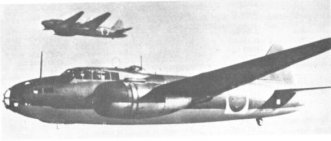
Mitsubishi G4M Betty
Mitsubishi's G4M 'Betty' bomber made its name by sinking two battleships in a day in 1941. Although the 'Betty' was not a perfect design, lacking in protection, this twin-engine warplane had respectable performance and bomb-carrying capacity. This much admired aircraft was the backbone of Japan's bomber force all the way through to the end of World War II, by which time it was used for carrying missiles.
Nicknamed 'Betty' by the Allies, this bomber did not have enough defensive armament and was susceptible to a fiery doom if its fuel was ignited. Some American pilots called the G4M the 'flying cigarette lighter'. Even so, Japan threw 2000 Mitsubishi G4Ms into the Pacific battle. The pratical qualities of this aircraft, including its reliability and long range, frequently overcame its shortcomings, leaving a trail of destruction in its wake.
Designed in 1937 and becoming operational in 1940, the 'Betty' had an unremarkable record with the Japanese army, but became one of the strongest weapons in Japan's naval force. Manufactured in greater numbers than any other Japanese aircraft, the G4M achieved considerable success in long-range bombing duties.
Mitsubishi engineers improved the 'Betty' as the war progressed, adding a better tailgun and other features but even though pilots liked the aircraft it was a creature of the past, not the future. Ironically, after years of war, the G4M's final duty was to carry the Japanese surrender delegation to the island of Ie Shima four days after the fighting ended.
 |
 |
| For duties in Japan's vast Pacific empire, the G4M had exceptional range. |
The G4M was a sound design, but too much was asked of it, especially at the end of the war. It was very successful during early operations in China. |
|
Mitsubishi G4M Betty (Technical Specification) |
| Role |
Twin-engined seven-seat land-based naval medium-bomber |
| Manufacturer |
Mitsubishi |
| Maximum Speed |
438 kmh (270 mph) |
| Maximum Range |
4,335 km (2,694miles) |
| Climb rate |
8,000 meters (26,250 feet) |
Weight
Empty
Maximum Takeoff |
8,160 kg (17,952 lbs)
12,500 kg (27,500 lbs) |
Dimensions
Wingspan
Length
Height
Wing Area |
25.00 meters (82 ft)
20.00 meters (66 ft)
6.00 meters (20 ft)
78.12 square meters (841 sq ft) |
| Engines |
Two Mitsubishi Kasei 25 radial engines each providing 1343-kW |
| Armament |
One 20 mm (0.79 in) cannon in tail
Two 7.92 mm (0.31 in) machine-guns in nose and one in each beam position
1000 kgs (2,200 lbs) of bombs
One 800 kgs (1,1760 lbs) torpedo |
Photo Gallery
Click here to submit your photo
| Have A Passion For Aircraft? |
Subscribe to our 14 series FREE newsletter
delivered weekly on World War 2 Aircraft factfile... |
| NB:- We hate spam as much as you do, so your email address will NEVER be shared with or sold to anyone else. That's a Guarantee. |
|
|




